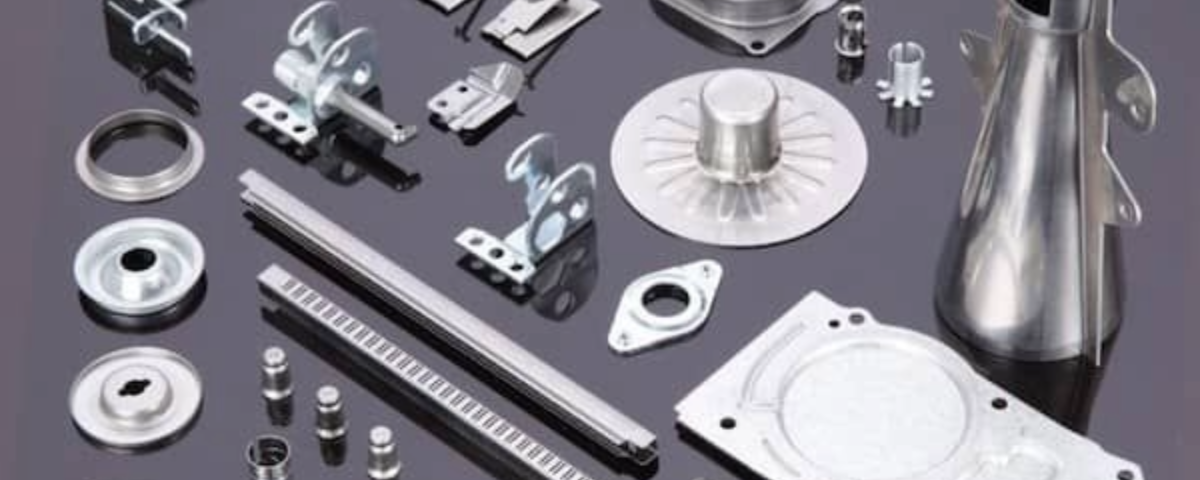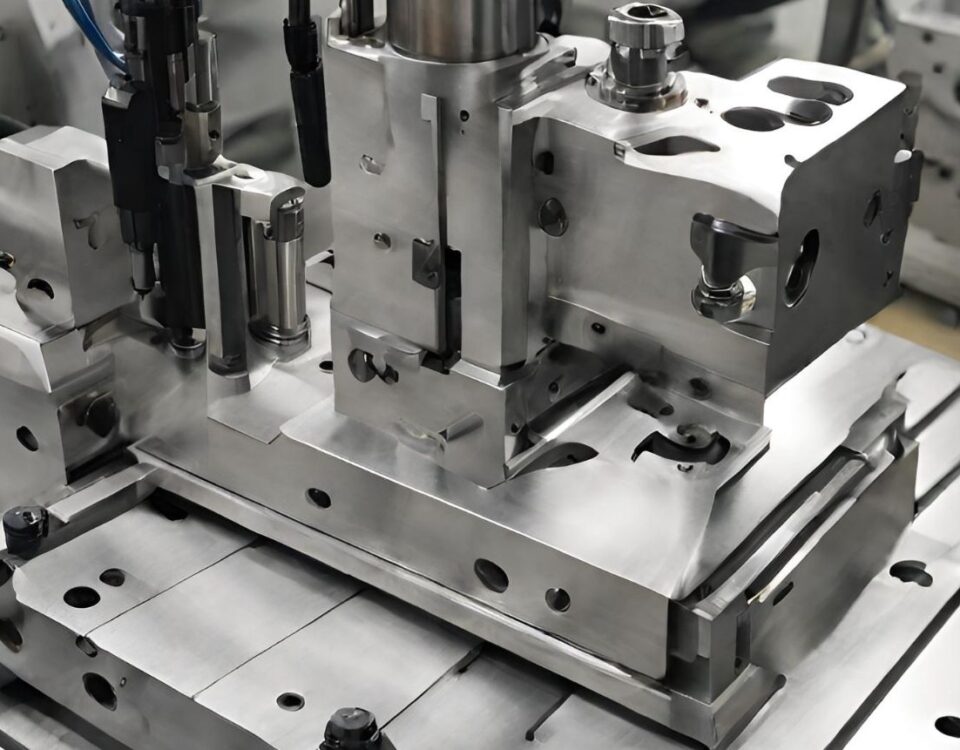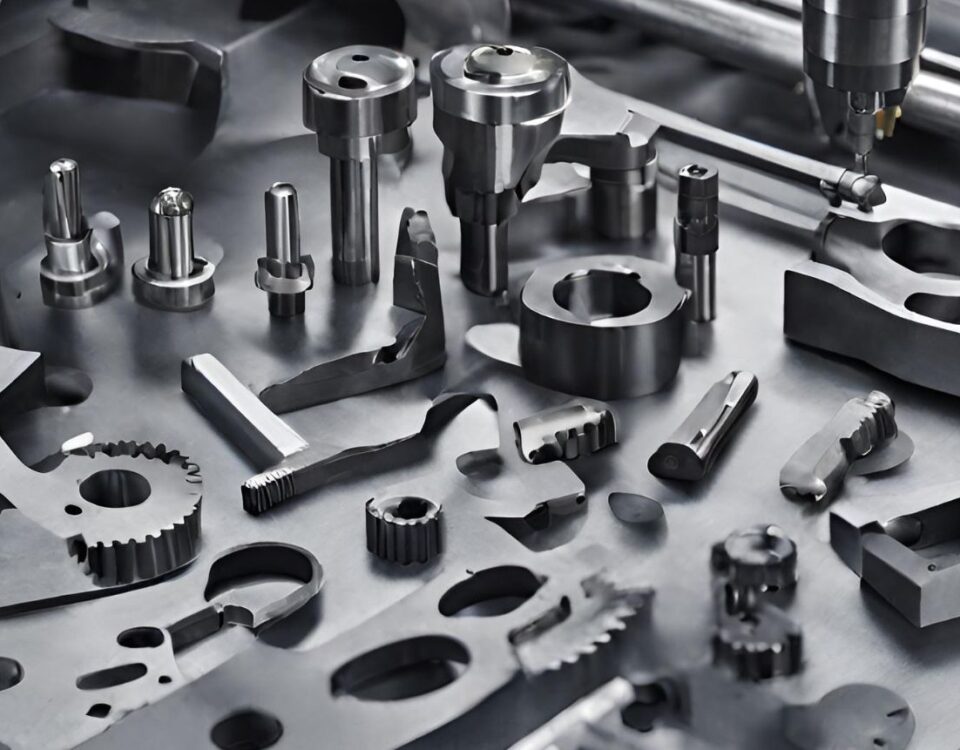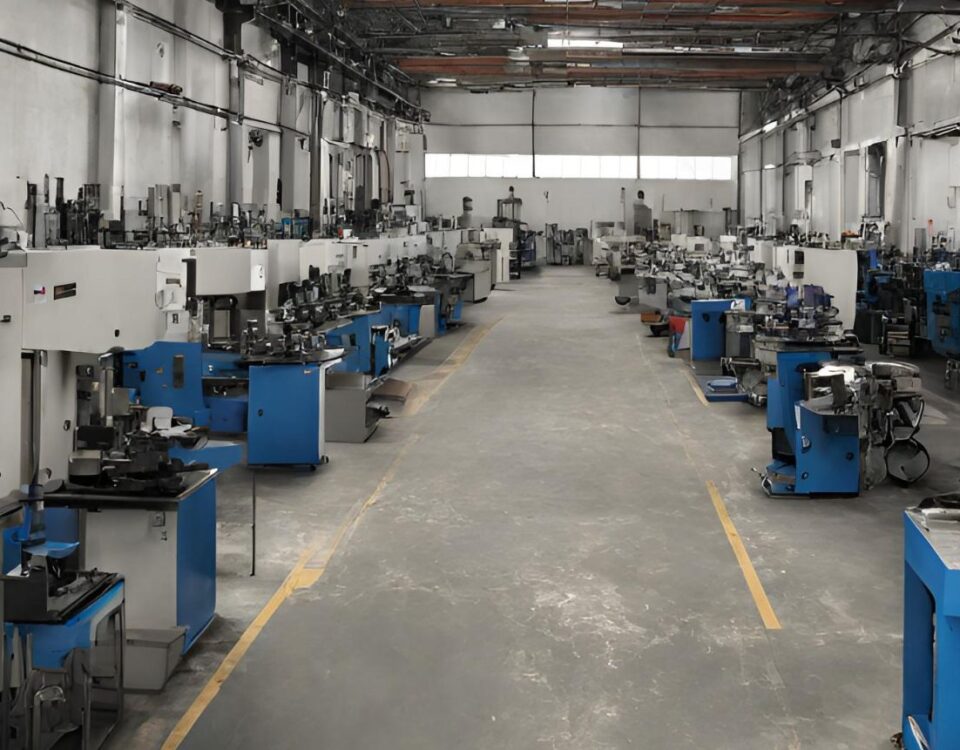
Precision Unleashed: Elevate Your Designs With 5 Axis CNC Machining
22 November 2023
How 3D Printing Services Works
27 November 2023Sheet metal stamping is a manufacturing process used to create components or parts from flat metal sheets. It involves the use of specialized tools and dies to shape the metal through deformation. Here are some key points to understand about sheet metal stamping:
1. Process Overview: Sheet metal stamping typically involves feeding a sheet of metal into a stamping press, where it is held in place while a die descends to shape the metal into the desired form. The die may have one or multiple stages to achieve the final shape.
2. Material Selection: The choice of material is crucial in sheet metal stamping. Commonly used metals include steel, aluminum, and stainless steel, chosen based on factors like strength, durability, corrosion resistance, and cost.
3. Design Considerations: Designing for sheet metal stamping requires taking into account factors such as material thickness, bend radius, and tolerance requirements. Minimizing complexity, incorporating appropriate features like flanges and holes, and considering manufacturability are essential for a successful stamping process.
4. Tooling and Dies: Tooling plays a critical role in sheet metal stamping. Dies are precision-made tools that shape the metal into the desired form. They consist of a punch (upper part) and a die (lower part) that work together to deform the metal. Proper maintenance and regular inspection of tooling are necessary for quality stamping.
5. Quality Control: Quality control measures are vital to ensure the accuracy and consistency of stamped parts. Inspection techniques, such as dimensional checks, material testing, and visual inspections, are employed to maintain high-quality standards.
6. Cost Considerations: Sheet metal stamping offers cost advantages for large volume production due to its high-speed capabilities. However, tooling costs can be significant, making it more economical for long-term or high-volume projects.
7. Advantages: Sheet metal stamping provides several advantages, including high production rates, precise and repeatable part production, versatility in creating complex shapes, and cost-effectiveness for large volume runs.
Understanding these aspects of sheet metal stamping will help buyers make informed decisions when it comes to procuring stamped metal parts. Collaborating with experienced suppliers and considering the specific requirements of the project will further ensure successful outcomes.
Basic techniques of Sheet Metal Stamping
Sheet metal stamping is a manufacturing process used to create components or parts from flat metal sheets. It involves the use of specialized tools and dies to shape the metal through deformation. Here are some key points to understand about sheet metal stamping:
Process Overview: Sheet metal stamping typically involves feeding a sheet of metal into a stamping press, where it is held in place while a die descends to shape the metal into the desired form. The die may have one or multiple stages to achieve the final shape.
Material Selection: The choice of material is crucial in sheet metal stamping. Commonly used metals include steel, aluminum, and stainless steel, chosen based on factors like strength, durability, corrosion resistance, and cost.
Design Considerations: Designing for sheet metal stamping requires taking into account factors such as material thickness, bend radius, and tolerance requirements. Minimizing complexity, incorporating appropriate features like flanges and holes, and considering manufacturability are essential for a successful stamping process.
Tooling and Dies: Tooling plays a critical role in sheet metal stamping. Dies are precision-made tools that shape the metal into the desired form. They consist of a punch (upper part) and a die (lower part) that work together to deform the metal. Proper maintenance and regular inspection of tooling are necessary for quality stamping.
Quality Control: Quality control measures are vital to ensure the accuracy and consistency of stamped parts. Inspection techniques, such as dimensional checks, material testing, and visual inspections, are employed to maintain high-quality standards.
Cost Considerations: Sheet metal stamping offers cost advantages for large-volume production due to its high-speed capabilities. However, tooling costs can be significant, making it more economical for long-term or high-volume projects.
Advantages: Sheet metal stamping provides several advantages, including high production rates, precise and repeatable part production, versatility in creating complex shapes, and cost-effectiveness for large volume runs.
Understanding these aspects of sheet metal stamping will help buyers make informed decisions when it comes to procuring stamped metal parts. Collaborating with experienced suppliers and considering the specific requirements of the project will further ensure successful outcomes.
Types of Stamping Operations
-
Progressive die stamping
-
Transfer Die Stamping
-
Four-Slide Stamping
-
Fine Blanking
-
Deep Draw Stamping
-
Short Run Stamping
Stamping Advantages and Disadvantages
Stamping offers several advantages and disadvantages in sheet metal manufacturing. Let's explore them:
Advantages of Stamping:
1. Cost-effective for High-Volume Production: Stamping is highly efficient for large-volume production due to its high-speed capabilities. Once the tooling is set up, the cost per part decreases significantly, making it cost-effective for mass production.
2. Precision and Consistency: Stamping allows for precise and repeatable part production. The use of specialized dies and tooling ensures consistent shaping and dimensions, resulting in high-quality parts.
3. Versatility in Complex Shapes: Stamping enables the creation of complex shapes with high levels of intricacy. Multiple stamping operations can be combined to achieve the desired form, allowing for the production of intricate and detailed parts.
4. Material Utilization: Stamping minimizes material waste as it involves shaping the metal sheet without significant material removal. This leads to efficient material utilization and cost savings.
5. Speed and Efficiency: Stamping processes are generally fast and efficient, enabling high production rates. The automation potential in stamping contributes to increased productivity and reduced labor costs.
Disadvantages of Stamping:
1. High Initial Tooling Costs: The upfront tooling costs for stamping can be substantial, especially for complex shapes or low-volume production. Tooling design, fabrication, and maintenance can contribute significantly to the overall cost.
2. Limited Design Flexibility: Stamping may have design limitations due to the nature of the process. Factors like material thickness, bend radius, and draft angles need to be considered during the design phase. Complex or intricate designs may require multiple stamping operations, increasing costs and complexity.
3. Material Constraints: Certain materials may be more challenging to stamp than others. Brittle materials or those prone to cracking or tearing may require additional considerations or alternative manufacturing methods.
4. Setup Time for Tooling Changes: Changing tooling for different part designs can be time-consuming. This setup time can impact production efficiency, especially for smaller production runs with frequent design changes.
5. Limited Suitability for Small Production Runs: Stamping is most cost-effective for high-volume production. For small production runs, the high initial tooling costs may outweigh the benefits, making alternative manufacturing methods more suitable.
It's important to carefully consider these advantages and disadvantages when deciding to utilize stamping for sheet metal manufacturing. The specific project requirements, production volume, budget, and design complexity should all be evaluated to determine the best manufacturing approach.
Conclusion
In conclusion, understanding sheet metal stamping involves grasping the various techniques and operations involved in shaping metal sheets to create desired forms. Blanking, bending, drawing, punching, forming, coining, hemming, and progressive stamping are among the basic techniques used.
Sheet metal stamping offers several advantages, including cost-effectiveness for high-volume production, precision, consistency, versatility in shaping complex forms, and efficient material utilization. However, there are also some disadvantages to consider, such as high initial tooling costs, limited design flexibility, material constraints, setup time for tooling changes, and limited suitability for small production runs.
By considering these advantages and disadvantages, along with project requirements, production volume, budget, and design complexity, manufacturers can make informed decisions about whether sheet metal stamping is the most suitable manufacturing approach for their needs. Overall, sheet metal stamping is a widely used and efficient method for transforming metal sheets into a variety of components used in various industries.




